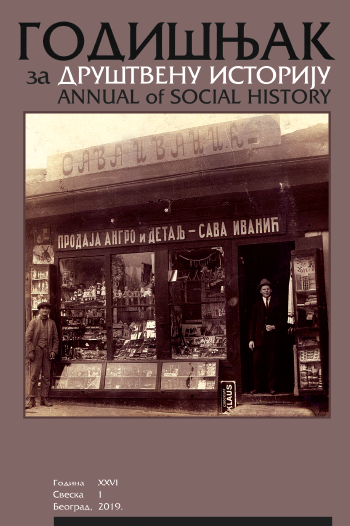Између „nobles sauvages” и „sauvage blanc” – екокритичка промишљања и мапирање филмова и књига о Бразилу
Between „nobles sauvages” and „sauvage blanc” – ecocritical reflections and mapping of movies and books on Brazil
Author(s): Jelena MrgićSubject(s): Anthropology, Historical Geography, Human Ecology, Film / Cinema / Cinematography
Published by: Udruženje za društvenu istoriju
Keywords: Brazil; historical geography; cinema; environmental history;
Summary/Abstract: The text presents an attempt to give an ecocritical interpretation of four motion pictures and a handful of literary works which concern the preconceptions and perceptions of the tropical world in Brazil, the categories applied to its inhabitants as ’nobles sauvages’, while the Amazonia, the heart of Brazil, is presented either as a ’Paradise lost and recreated’ or ’Green hell’. In my interpretation I insist on finding the cultural and social background of the authors/directors, and the time setting of the films as a possible indicator of ecological awareness, both individual and global. The Guaranis in “The Mission” (1986) are mute and passive figures, and as such they defy the destruction of the artificial recreation of Jesuit Paradise of reducciones (missions). The archetypical ’sauvage blanc’, white man going raving mad in the tropics is epitomized in two of Werner Herzog’s movies – Aguirre, der Zorn Gottes (1972) and Fitzcarraldo (1982), mostly by the fascinating power of Klaus Kinski’s authenticity. Herzog’s thoughts on Nature and Man are discussed against his cultural background and contemporary cinematographic interpretations. The fourth movie is the dearest to my heart – the life and stories of Sebastiao Salgado, who is with the help of his wife and Kameraderin Lelia resurrecting Mata Atlantica on his estate – The Salt of the Earth (2014), and they are giving me hope in these dark moments for the future of Brazil and our beautiful planet. I have also dealt with the viciousness of monocultures in the agroeconomy of Brazil – caoutchouc, cocoa, and coffee, and, on the other hand, the beautiful diversity of Brazilian nation, immortalized by Jorge Amado and other authors. Finally, I have presented a map of my cinematographical and literary journeys, so the readers can appreciate the greatness of the whole continent, and to show how historical geography can and should be appied more widely.
Journal: Godišnjak za društvenu istoriju
- Issue Year: 2019
- Issue No: 1
- Page Range: 29-64
- Page Count: 36
- Language: Serbian

